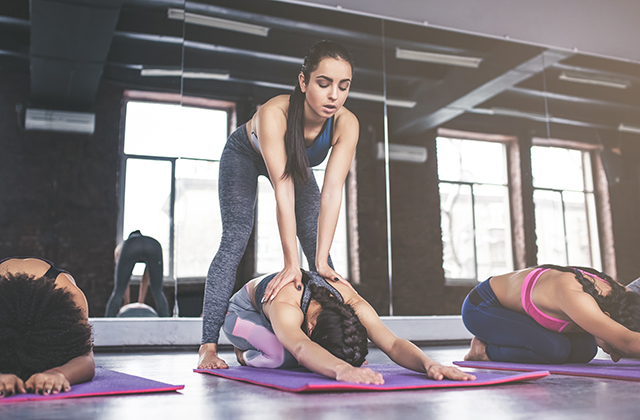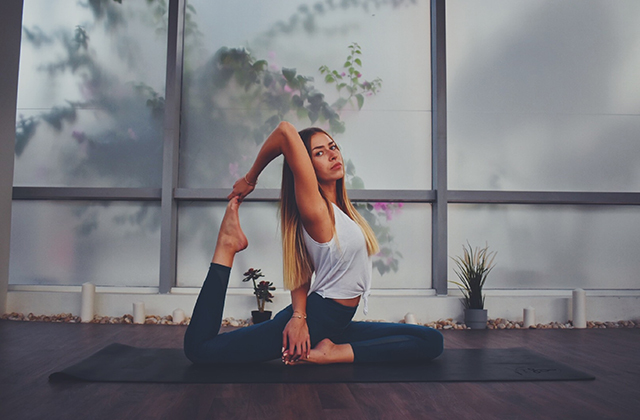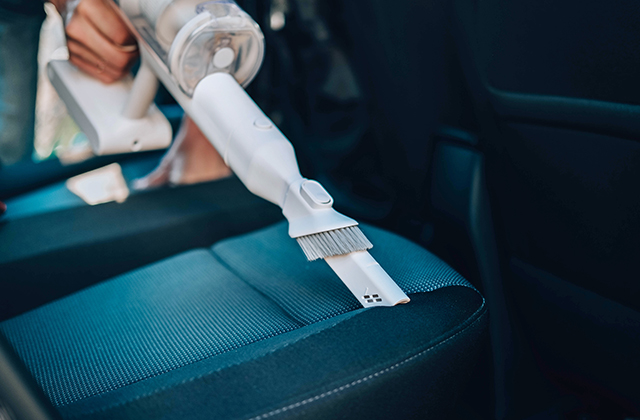Pilates is a holistic form of exercise that focuses on strengthening the body, improving flexibility, and enhancing mental awareness. It was developed by Joseph Pilates in the early 20th century and has gained popularity worldwide due to its numerous benefits for people of all ages and fitness levels. Whether you are a beginner or have some experience with Pilates reformer Northern Beaches, this comprehensive guide will provide you with valuable insights to master the art of Pilates and take your practice to the next level.
Introduction to Pilates
Pilates is a form of exercise that combines elements of strength training, flexibility, and body awareness. It involves a series of controlled movements that target specific muscles, primarily the core muscles of the abdomen, lower back, and hips. Pilates is typically performed on a mat or using specialized equipment such as a reformer, Cadillac, or chair.
The Benefits of Pilates
One of the key benefits of Pilates is its ability to strengthen the core muscles, which are responsible for maintaining good posture and supporting the spine. By improving core strength, Pilates can help alleviate back pain and promote better alignment and balance. In addition, Pilates can increase flexibility, tone muscles, improve joint mobility, and enhance body awareness and control.
Another benefit of Pilates is its focus on the mind-body connection. Pilates exercises require concentration, precision, and control, which help develop mental focus and concentration skills. Pilates can also reduce stress, improve relaxation, and boost overall well-being.
Understanding the Principles of Pilates
Pilates is based on a set of principles that guide the practice and ensure safe and effective execution of the exercises. These principles include concentration, control, centering, flow, precision, and breathing.
Concentration involves focusing the mind on the movement and the muscles being worked. Control refers to the precise and controlled execution of each movement, with emphasis on quality over quantity. Centering involves engaging the core muscles to stabilize the spine and pelvis during exercises. Flow refers to the smooth and continuous flow of movements, creating a sense of rhythm and grace. Precision involves performing each exercise with attention to detail and proper alignment. Breathing is an essential aspect of Pilates, with specific breathing patterns that accompany each movement.
Understanding and applying these principles in your Pilates practice will help you achieve maximum benefits and prevent injuries.
Basic Pilates Exercises for Beginners
If you are new to Pilates, it’s essential to start with basic exercises to build a solid foundation and learn proper technique. Here are some basic Pilates exercises that are suitable for beginners:
- Pelvic Curl: Lie on your back with your knees bent and feet flat on the mat. Inhale to prepare, and exhale as you curl your spine off the mat one vertebra at a time, lifting your hips towards the ceiling. Inhale at the top, and exhale as you roll your spine back down to the starting position.
- Hundred: Lie on your back with your legs extended towards the ceiling, arms reaching by your sides
- Single Leg Stretch: Lie on your back with your knees bent, shins parallel to the ceiling, and hands resting on your shins. Inhale to prepare, and as you exhale, lift your head and shoulders off the mat, extending your right leg towards the floor while pulling your left knee towards your chest. Inhale as you switch legs, and continue alternating for several repetitions.
- Bridging: Lie on your back with your knees bent and feet flat on the mat. Inhale to prepare, and as you exhale, lift your hips towards the ceiling, peeling your spine off the mat one vertebra at a time. Inhale at the top, and exhale as you roll your spine back down to the starting position.
- Swan Dive Prep: Lie on your stomach with your hands by your shoulders, elbows bent. Inhale to prepare, and as you exhale, lift your chest and head off the mat while extending your arms in front of you. Inhale at the top, and exhale as you lower your chest and head back down.
These basic exercises are a great starting point for beginners to build strength, flexibility, and body awareness. It’s important to practice proper form and alignment, and to start with modifications or props if needed. As you become more comfortable and confident, you can progress to more intermediate and advanced Pilates exercises.
Progressing to Intermediate Pilates Exercises
Once you have mastered the basic Pilates exercises, you can progress to more challenging intermediate exercises to further challenge your strength, flexibility, and coordination. Here are some examples of intermediate Pilates exercises:
- Double Leg Lower Lift: Lie on your back with your legs extended towards the ceiling, arms resting by your sides. Inhale to prepare, and as you exhale, lower both legs towards the floor without touching the mat, and then lift them back up to the starting position. Repeat for several repetitions while maintaining control and stability in your core.
- Scissor: Lie on your back with your head and shoulders lifted off the mat, one leg extended towards the ceiling, and the other leg hovering above the floor. Inhale to prepare, and as you exhale, switch legs by lowering one leg towards the floor and lifting the other leg towards the ceiling, using your core to stabilize and control the movement. Continue switching legs for several repetitions.
- Side Plank: Start in a side-lying position with your elbow directly under your shoulder and your legs extended, one foot stacked on top of the other. Inhale to prepare, and as you exhale, lift your hips off the mat, coming into a side plank position. Hold for a few breaths, and then lower your hips back down to the mat. Repeat on the other side.
These intermediate Pilates exercises require more strength, balance, and coordination compared to the basic exercises. It’s important to continue practicing proper form and alignment, and to listen to your body to avoid any strain or discomfort.
Advanced Pilates Exercises for Experienced Practitioners
For those who have been practicing Pilates for some time and have built a strong foundation, advanced Pilates exercises can provide an additional challenge to further enhance your Pilates practice. Here are some examples of advanced Pilates exercises:
- Teaser: Sit on your mat with your legs extended in front of you, arms reaching towards your feet. Inhale to prepare, and as you exhale, roll your spine down towards the mat one vertebra at a time while keeping your legs lifted and your arms reaching forward. Inhale at the bottom, and exhale as you roll your spine back up to the starting position, maintaining control and stability in your core.
- Control Balance: Sit on your mat with your knees bent, feet lifted off the mat, and hands resting on your shins. Inhale to prepare, and as you exhale, extend your legs towards the ceiling while keeping your balance on your sitting bones. Hold for a few breaths, and then lower your legs back down to the starting position with control.
- Boomerang: Lie on your back with your arms by your sides and legs extended towards the ceiling. Inhale to prepare, and as you exhale, roll your spine up into a seated position, extending your legs in front of you. Inhale at the top, and exhale as you roll back down to the starting position, articulating your spine one vertebra at a time.
- Snake: Lie on your stomach with your hands by your shoulders, fingers pointing forward. Inhale to prepare, and as you exhale, lift your chest and head off the mat, extending your arms towards the ceiling while keeping your legs on the mat. Inhale at the top, and exhale as you lower your chest and head back down.
Advanced Pilates exercises require a high level of strength, flexibility, and control, and should only be attempted by experienced practitioners who have a solid foundation in Pilates and are under the guidance of a qualified instructor.
Conclusion
In conclusion, Pilates is a versatile and effective form of exercise that can be practiced by individuals of all fitness levels. Starting with basic exercises and gradually progressing to more challenging exercises can help beginners and beyond to build strength, flexibility, and body awareness. It’s important to practice proper form, alignment, and listen to your body to avoid any strain or discomfort.
By incorporating Pilates into your fitness routine, you can improve your posture, core strength, and overall physical well-being. Remember to consult with a qualified instructor if you are new to Pilates or have any underlying health concerns.
FAQs (Frequently Asked Questions)
- Can anyone do Pilates, or is it only for athletes? Pilates is suitable for individuals of all fitness levels, from beginners to advanced practitioners. It can be adapted to accommodate different levels of fitness and body conditions.
- How often should I practice Pilates? The frequency of Pilates practice depends on your personal preference and schedule. It’s recommended to start with 2-3 sessions per week and gradually increase as you become more comfortable and confident.
- Do I need any special equipment for Pilates? Pilates can be done with or without equipment. Many exercises can be performed on a mat, but some exercises may require the use of props such as resistance bands, Pilates balls, or a Pilates reformer.
- Can Pilates help with weight loss? While Pilates can help to improve muscle tone, strength, and flexibility, it may not be the most effective form of exercise for weight loss. It’s important to combine Pilates with a healthy diet and other forms of cardiovascular exercise for optimal weight loss results.
- Is Pilates safe for individuals with injuries or health conditions? Pilates can be adapted to accommodate individuals with injuries or health conditions, but it’s important to consult with a qualified instructor and obtain clearance from your healthcare provider before starting any new exercise program.



